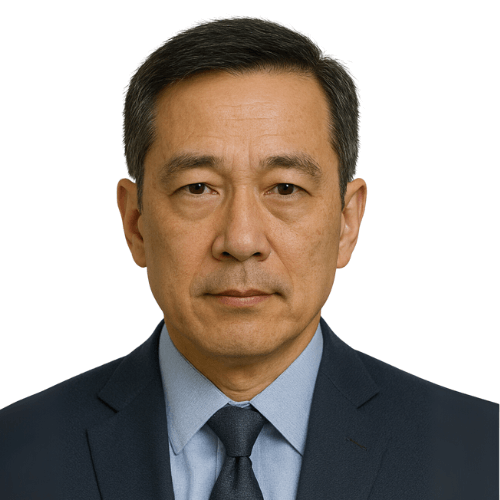Over the last two decades, Southeast Asia has emerged as one of the most dynamic and strategically significant regions for global finance. While its economic story is often told through manufacturing, trade, and digital innovation, a quieter yet equally transformative trend has taken shape: the rise of Southeast Asia as a hub for offshore Forex trading. From Singapore’s highly regulated markets to emerging financial centers in Malaysia, Indonesia, and the Philippines, the region now plays a crucial role in facilitating liquidity, technological infrastructure, and cross-border investment in the global currency ecosystem.
This evolution has not occurred in isolation. It reflects broader global shifts — the decentralization of trading activity, the growing sophistication of retail investors, and the need for flexible yet credible regulatory frameworks. As Western markets mature and growth opportunities flatten, Southeast Asia’s youthful demographics, digital penetration, and open economies have positioned it as a natural frontier for Forex expansion. Today, the region’s importance extends far beyond being a destination for capital; it has become a laboratory for innovation, regulation, and financial inclusion.
This article explores in depth how Southeast Asia has become integral to offshore Forex trading, the key countries driving its growth, the advantages and risks of operating in the region, and what the future holds for its evolving financial landscape.
Offshore Forex trading refers to trading currencies through brokers and liquidity providers located outside a trader’s home jurisdiction. This model offers advantages such as broader market access, flexible leverage, and exposure to diverse trading instruments. For years, the dominant centers for offshore Forex were in Europe and the Caribbean — jurisdictions like Cyprus, the United Kingdom, and the Cayman Islands. However, as regulations tightened and global compliance demands intensified, Southeast Asia began to emerge as an alternative hub combining cost efficiency, innovation, and geographic advantage.
Geographically, Southeast Asia occupies a pivotal position between the world’s largest Forex markets. It connects Asia’s financial giants — China, Japan, and India — with Europe and the United States. This strategic time zone overlap allows for near-continuous liquidity flow, making it an ideal base for brokerage operations and trading infrastructure. But geography alone cannot explain its rise. The true drivers lie in a combination of political stability, rapid digitalization, and regulatory diversity that allows firms to choose between fully licensed and offshore-friendly environments depending on their business models.
Key Regional Players and Their Roles
Each Southeast Asian nation contributes uniquely to the region’s offshore Forex landscape. Below is an overview of the most significant participants and their distinctive strengths:
| Country | Regulatory Body | Primary Role in Offshore Forex |
|---|---|---|
| Singapore | Monetary Authority of Singapore (MAS) | Regional headquarters for institutional trading, clearing, and liquidity |
| Malaysia | Labuan Financial Services Authority (Labuan FSA) | Tax-efficient offshore licensing center with strong compliance standards |
| Philippines | Securities and Exchange Commission (SEC) / Cagayan Economic Zone Authority (CEZA) | Retail-focused offshore trading licenses and fintech innovation |
| Indonesia | Badan Pengawas Perdagangan Berjangka Komoditi (BAPPEBTI) | Growing domestic Forex market with increasing regional connectivity |
| Thailand | Securities and Exchange Commission (SEC Thailand) | Strong investor protection laws; limited but regulated Forex access |
Collectively, these countries form a diversified ecosystem that supports both institutional and retail segments of the Forex market. From the strict regulation of Singapore to the flexible offshore licensing regimes of Labuan and CEZA, Southeast Asia offers a spectrum of opportunities tailored to different business models and risk appetites.
Singapore: The Institutional Anchor
At the center of Southeast Asia’s Forex success story lies Singapore — the third-largest Forex hub in the world, after London and New York. The Monetary Authority of Singapore (MAS) has crafted a world-class regulatory framework that balances innovation with stability. MAS ensures that all licensed Forex brokers meet stringent capital requirements, maintain client fund segregation, and adhere to anti-money laundering (AML) standards aligned with international norms.
Unlike other offshore centers that rely primarily on light regulation to attract firms, Singapore emphasizes credibility. Institutional investors, hedge funds, and liquidity providers choose Singapore precisely because it offers both access and assurance. The presence of major banks, interdealer brokers, and electronic communication networks (ECNs) ensures deep liquidity and a vibrant ecosystem for professional traders.
Furthermore, Singapore’s investments in fintech — including blockchain settlement systems and digital asset regulation — have positioned it as a forward-looking financial hub. This regulatory clarity appeals not only to Forex firms but also to emerging cross-asset trading companies integrating currency, crypto, and commodity derivatives under one platform.
Malaysia: The Offshore Licensing Alternative
Just across the strait, Malaysia’s Labuan International Business and Financial Centre (IBFC) plays a complementary role. Established in 1990, Labuan offers a tax-efficient and well-regulated offshore environment under the oversight of the Labuan Financial Services Authority (Labuan FSA). Forex brokers licensed here can operate with flexibility while still maintaining compliance with international standards.
Labuan’s attractiveness lies in its hybrid nature — it combines the credibility of an onshore jurisdiction with the cost advantages of offshore regulation. Brokers can benefit from lower tax rates, efficient licensing processes, and proximity to major Asian markets, all while being part of Malaysia’s politically stable environment. This makes Labuan particularly appealing for mid-sized brokers expanding regionally.
The Philippines: The Fintech Frontier
In recent years, the Philippines has carved out a niche as a fintech and offshore innovation hub. The Cagayan Economic Zone Authority (CEZA) introduced offshore financial licenses that allow foreign Forex and fintech companies to operate under special economic conditions. This has attracted a wave of startups and digital trading platforms seeking cost-effective bases for Asia-Pacific operations.
However, the Philippines’ offshore model remains in development. While CEZA offers flexibility, it has faced scrutiny regarding supervision standards and enforcement consistency. Nonetheless, the country’s young, tech-savvy population and growing fintech adoption make it an important player in the evolution of retail trading across Southeast Asia.
Thailand and Indonesia: Regional Growth Engines
Thailand and Indonesia, while not major offshore hubs, are home to rapidly expanding domestic Forex markets. Both countries have tightened oversight to protect investors while gradually integrating with international trading networks. Thailand’s SEC has allowed greater access to global markets through regulated brokers, while Indonesia’s BAPPEBTI continues to modernize its commodities and derivatives trading framework.
These domestic reforms enhance regional liquidity and attract global brokers to establish partnerships or representative offices. As financial literacy and internet connectivity grow, both countries are expected to play a larger role in Southeast Asia’s Forex future.
Advantages of Offshore Forex Operations in Southeast Asia
Southeast Asia’s appeal for offshore Forex activity is built on several competitive advantages:
- Strategic location: Time zone overlap with Asia, Europe, and the U.S. allows continuous liquidity flow.
- Diverse regulation: Brokers can choose between strict frameworks (Singapore) or flexible ones (Labuan, CEZA).
- Skilled workforce: Financial and technical talent across Singapore, Malaysia, and the Philippines supports regional expansion.
- Tax efficiency: Competitive corporate tax rates and offshore incentives make the region cost-effective for brokerages.
- Technological innovation: Strong fintech ecosystems and adoption of AI and blockchain tools in trading.
For international brokers, this combination creates a unique operational sweet spot — one that balances opportunity with manageable risk.
Challenges and Risks
Despite its strengths, Southeast Asia’s offshore Forex environment is not without challenges. Regulatory fragmentation across jurisdictions can complicate cross-border operations. Each country has different standards for licensing, capital adequacy, and compliance, forcing brokers to tailor their strategies accordingly.
Additionally, investor protection remains uneven. While Singapore and Labuan maintain strong oversight, some offshore centers have been criticized for lax enforcement, which can attract less reputable firms. This disparity can harm regional reputation if not addressed through cooperative regulatory initiatives.
Geopolitical tensions, currency volatility, and infrastructure disparities also pose ongoing risks. However, most governments in the region recognize these challenges and are taking steps to strengthen financial integration and harmonization across ASEAN markets.
The Role of Technology and Fintech in Regional Growth
Technology has been the defining force behind Southeast Asia’s Forex expansion. The proliferation of cloud-based trading platforms, electronic communication networks (ECNs), and data analytics tools has lowered entry barriers for both brokers and traders. Local fintech startups are introducing automation, mobile apps, and alternative payment systems tailored to regional users, further expanding participation in Forex markets.
In addition, governments and regulators have embraced innovation. Singapore’s MAS FinTech Regulatory Sandbox and Malaysia’s Fintech Booster Program encourage safe experimentation in financial technologies. This proactive approach makes Southeast Asia not only a place where Forex trading thrives but also a region shaping the future of digital finance.
Future Outlook: Integration and Maturity
The future of offshore Forex trading in Southeast Asia lies in greater integration. As ASEAN economies deepen cooperation under frameworks like the ASEAN Economic Community (AEC), harmonization of financial standards is expected to accelerate. Shared regulatory guidelines could reduce friction for cross-border operations, while digital identity systems and payment rails enhance security and transparency.
Singapore will likely continue to serve as the institutional anchor, while Malaysia and the Philippines support retail and offshore expansion. Indonesia and Thailand’s maturing domestic markets will add liquidity depth and investor diversity. Together, these developments point to a regional Forex ecosystem that is both globally connected and locally resilient.
Conclusion
The rise of Southeast Asia as a key region in offshore Forex trading is far more than a geographical accident — it is the result of decades of economic evolution, policy innovation, and technological progress. The region’s story represents how emerging markets can redefine global finance by combining flexibility with structure, and ambition with prudence. While Singapore remains the flagship, what makes Southeast Asia so compelling is the collective power of its diverse economies working toward a shared financial identity.
At its core, Southeast Asia’s success in offshore Forex trading rests on three interlinked pillars: accessibility, adaptability, and credibility. Accessibility comes from geography and connectivity — a region that bridges East and West, operating across multiple time zones with minimal latency. Adaptability emerges from the region’s regulatory diversity, where countries like Singapore and Malaysia provide strong institutional anchors while newer jurisdictions like the Philippines and Indonesia experiment with innovation-friendly models. Credibility is achieved through the commitment to modernization, transparency, and inclusion — qualities that international brokers increasingly demand in a post-globalization world defined by regulatory scrutiny.
Singapore’s role cannot be overstated. Its disciplined approach, guided by the Monetary Authority of Singapore (MAS), has established a benchmark for trust and reliability that gives the entire region legitimacy. When institutional players choose Singapore as their regional headquarters, they are not just choosing a city; they are choosing a regulatory philosophy rooted in foresight, prudence, and predictability. The city-state’s global integration — from banking to data infrastructure — ensures that liquidity flows seamlessly between Asia, Europe, and the U.S., creating a trading environment where speed meets security. For professional traders and liquidity providers, that combination is priceless.
Yet the real story of Southeast Asia’s rise lies beyond its leading player. Jurisdictions like Malaysia’s Labuan and the Philippines’ CEZA have embraced offshore licensing as a strategic growth tool rather than a loophole. By offering cost-efficient and compliant environments, they attract small and mid-tier Forex brokers who might otherwise struggle to meet the capital and compliance thresholds of more expensive Western markets. This democratization of financial opportunity has allowed hundreds of firms to access global liquidity networks, fostering job creation, financial literacy, and regional specialization.
Meanwhile, fintech and digitalization have provided Southeast Asia with the momentum needed to stay ahead. From mobile trading platforms and payment gateways to blockchain-based settlements and algorithmic execution, the region is now setting standards in financial technology adoption. Governments, rather than resisting innovation, have embraced it as a competitive advantage. This willingness to modernize has given Southeast Asia an edge over older financial hubs that often struggle with bureaucratic inertia or outdated infrastructure.
Of course, challenges remain. The patchwork of regulations across ASEAN countries can create operational complexity, and not all jurisdictions uphold equal standards of oversight. Some smaller offshore centers still face reputational risks from lax supervision or insufficient investor protection. But this diversity, while occasionally a source of friction, also gives the region resilience. It allows each country to specialize, offering investors and brokers a range of environments suited to their needs — from the ultra-regulated professionalism of Singapore to the agile, innovation-driven flexibility of CEZA and Labuan.
The next phase of growth for Southeast Asia’s Forex ecosystem will be driven by integration rather than competition. As ASEAN financial cooperation strengthens, we can expect greater harmonization of standards, improved data sharing, and cross-border licensing arrangements. These developments will make it easier for brokers to expand regionally while maintaining compliance across multiple markets. At the same time, initiatives like digital identity verification, cloud-based risk management systems, and regional payment interoperability will reinforce transparency and investor trust.
Southeast Asia’s trajectory also carries global implications. As Western economies face slower growth and increasingly restrictive financial regulations, capital and talent are gravitating toward dynamic, open regions like ASEAN. For Forex trading, which thrives on liquidity, speed, and accessibility, Southeast Asia offers a perfect mix of energy and structure. In many ways, it embodies what the next generation of financial hubs must become: digital, diversified, and globally connected.
Ultimately, the rise of Southeast Asia in offshore Forex trading is not about replacing London or New York — it is about creating a complementary, sustainable ecosystem that reflects the realities of a multipolar financial world. Its strength lies in its pluralism: each country contributes something different, from Singapore’s trust to Malaysia’s flexibility, from the Philippines’ innovation to Indonesia’s scale. Together, they form a network that is young, ambitious, and increasingly indispensable to the global financial system.
In the coming decade, Southeast Asia will likely move from being a secondary offshore destination to a primary strategic hub. As liquidity deepens and technology continues to flatten barriers, the region will become not only a participant in global Forex markets but a key architect of their future. The success of Southeast Asia demonstrates that leadership in finance is no longer confined to traditional power centers — it belongs to those who can adapt, connect, and inspire trust. And in that sense, Southeast Asia is not just a region on the rise; it is the model for what the future of offshore finance will look like.
Frequently Asked Questions
What makes Southeast Asia attractive for offshore Forex trading?
The region offers strategic time zone advantages, strong regulatory diversity, tax benefits, and rapidly growing digital infrastructure, making it ideal for both brokers and traders.
Which country is the main Forex hub in Southeast Asia?
Singapore is the leading Forex center, accounting for the majority of institutional trading and regional liquidity.
What is the role of Labuan in Malaysia’s Forex market?
Labuan serves as a tax-efficient offshore licensing jurisdiction under the Labuan FSA, attracting international brokers seeking flexible yet compliant regulation.
Is offshore Forex trading legal in the Philippines?
Yes, under specific licenses issued by CEZA, foreign firms can operate offshore trading services targeting international clients.
How does technology support Forex trading in Southeast Asia?
Advanced digital networks, fintech innovation, and government-led initiatives such as regulatory sandboxes foster safe, efficient, and transparent trading environments.
What are the main risks of offshore Forex in the region?
Regulatory inconsistency, uneven investor protection, and reputational risk from lightly supervised jurisdictions remain challenges for the industry.
Will Southeast Asia continue to grow as a Forex hub?
Yes. As ASEAN financial integration deepens and technology evolves, the region will continue to expand its role in global Forex trading.
Note: Any opinions expressed in this article are not to be considered investment advice and are solely those of the authors. Singapore Forex Club is not responsible for any financial decisions based on this article's contents. Readers may use this data for information and educational purposes only.







